Understanding Dog Heat Cycle: A Detailed Guide


As a pet owner, it is crucial to understand the reproductive cycle of your female dog since it plays a significant role in her overall health and well-being. Moreover, if and when your un-spayed female dog goes into heat, it can be a confusing time for both you and your fur baby. Hence, to avoid making it a stressful period for both of you, you need to stay prepared for the same.
This comprehensive guide will provide you with valuable insights into the important aspects of the dog heat cycle, ensuring that you are well-informed and better equipped to take care of your furry companion. So read on.
What Is The Dog Heat Cycle?
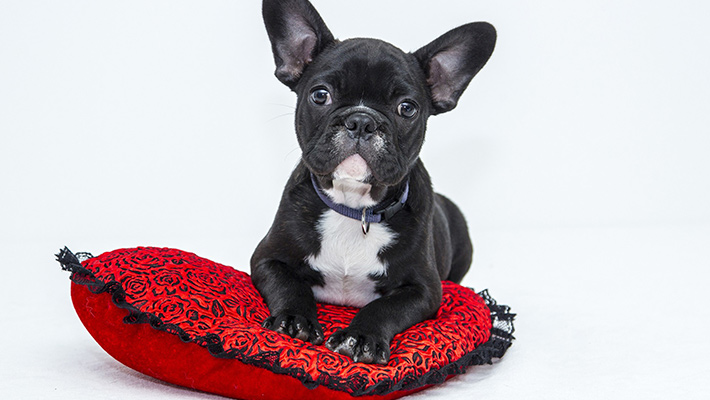
The dog heat cycle refers to the reproductive cycle that female dogs go through. This cycle is characterized by hormonal changes that prepare the dog for a potential pregnancy. Unlike humans, dogs do not experience a monthly menstrual cycle. Instead, they have an estrus cycle, which typically occurs twice a year. During this cycle, the female dog becomes receptive to mating and may display specific behaviors and physical changes.
On average, a female dog becomes sexually mature when she is around six months old, but it can vary a lot from 4 to 24 months. However, if you are a first-time dog owner of a female dog or are considering adopting a bitch, then note that the age at which a female dog has its first heat cycle depends a lot on their breed and size. A female dog belonging to a larger breed generally gets their period when they are slightly older, whereas bitches of smaller breeds experience their first heat cycle at an earlier age.
How Often Do Female Dogs Experience The Heat Cycle?
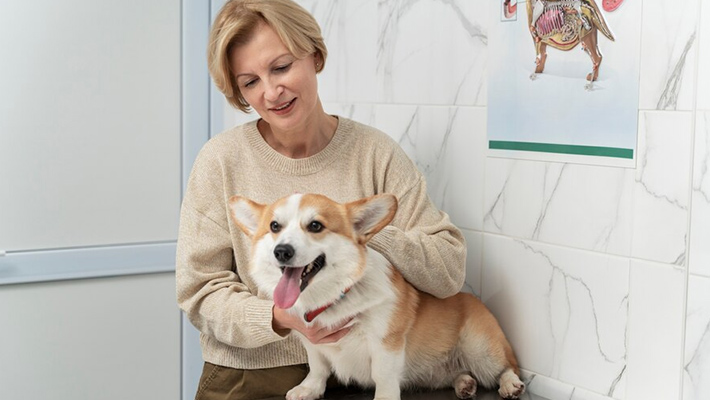
In general, female dogs experience a heat cycle every six months or, in other words, twice a year. However, the frequency of the heat cycle may vary slightly, especially when a bitch first starts going into heat. It can take female dogs around 18-24 months to have a regular heat cycle.
Moreover, similar to when a female dog goes into heat for the first time, the frequency of the heat cycle also depends on the size and breed. Smaller breeds tend to experience heat cycles on a more frequent basis, which can go up to 3-4 times a year.
Large dog breeds such as Great Danes, Tibetan Mastiffs, and St. Bernards, among others, only go into heat once a year. If you have a female dog at home or are planning to get one soon, then it is recommended that you keep track of your dog’s heat cycle. The frequency of the cycle will depend on your dog’s size and breed but it has to be consistent. If it is not consistent, then you should consult a veterinarian.
Phases Of The Dog Heat Cycle

The dog heat cycle consists of four phases: proestrus, estrus, diestrus, and anestrus. We have explained the four stages of the dog heat cycle in detail below:
Proestrus
This is the initial stage and start of the heat period. It is marked by the swelling of the vulva and the release of bloody vaginal discharge. The female dog may also attract male dogs during this stage but is not yet ready for mating. This phase lasts for about 9-10 days on average. However, it is important to note that this phase can range from anywhere between a few days to four weeks.
Estrus
This is the second stage, which is also better known as ‘heat.’ It is characterized by the female dog’s readiness for mating. During this stage, the discharge becomes less bloody and transforms into a straw-colored fluid. The vulva remains swollen, and the female may exhibit more receptive behavior towards male dogs.
You may notice that your dog is urinating more frequently, which indicates that she is marking spots because she is ready to breed. She may also try to attract intact male dogs through playful behavior but act aggressively towards other female dogs. This stage generally lasts for around 9 days. However, the exact timing can vary for each female dog and can stretch from anywhere between 3 to 21 days.
Diestrus
The third stage in the dog heat cycle occurs after the Estrus stage, also known as the ‘in heat’ stage.’ This stage extends from the end of the estrus stage to around 60-90 days(if the female dog is not pregnant) or up until she gives birth to puppies.
The hormone progesterone, which is responsible for maintaining pregnancy, rises to a peak level 2 to 3 weeks after ovulation and then gradually declines over the next weeks.
If the dog is pregnant, diestrus ends with the birth of the puppies. If the dog is not pregnant, diestrus ends when progesterone levels drop to the baseline and the dog is no longer interested in mating. Moreover, during this stage, the color of the discharge turns redder, and the vulva gradually returns to its normal size.
The dog enters the anestrus or resting phase. Diestrus can be confirmed by measuring progesterone levels or by performing a vaginal cytology.
Anestrus
Finally, anestrus is the fourth stage, which is a period of sexual inactivity. The female dog’s reproductive system rests during this stage, and there are no visible signs of heat. This stage can last for several months until the cycle repeats.
Dog Heat Cycle: Signs And Symptoms

A dog in heat will undergo several physical and behavioral changes throughout its heat cycle, which usually lasts about three weeks.
Some of the common signs and symptoms of a dog in heat are:
- A large, red, swollen vulva
- Bleeding from the vulva or a yellow/red/brown discharge
- Excessive licking of the genital area
- Clingy, nervous, or agitated behavior
- Receptiveness to male dogs
- Tail held to the side
- Frequent urination and marking spots
It is essential to recognize the signs and symptoms that indicate your dog is in heat. The most noticeable sign is the swelling of the vulva, which is often accompanied by a bloody discharge during the proestrus stage. This discharge gradually changes color and becomes lighter as the cycle progresses.
Changes in behavior are another common sign. Female dogs in heat may become more restless and agitated and seek attention from male dogs. They may also urinate more frequently to mark their territory. Additionally, some dogs may exhibit a flagging behavior, where they lift their tails to the side to expose the vulva when approached by a male dog.
Managing A Female Dog In Heat
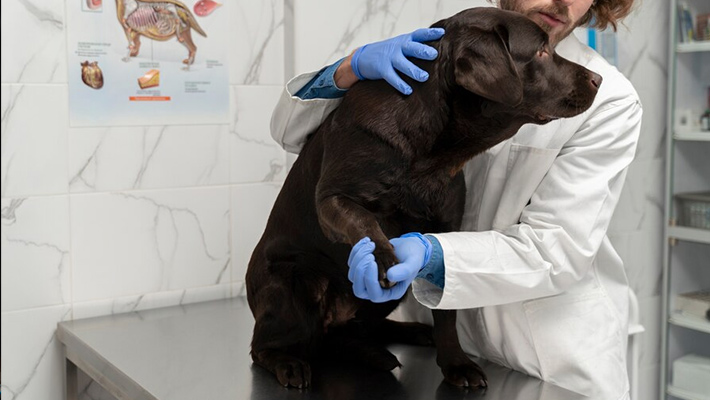
Managing a dog in the heat requires additional care and attention. It can be challenging, but there are some steps you can follow to make it easier for both you and your dog. Here are some tips:
Help Her Relax
Provide a calm, quiet environment for your dog to relax. You can play soft music, give her a heated dog bed, and offer her interactive toys or safe chew bones.
Use Doggy Diapers Or Sanitary Pads
Stock up on dog diapers or pads to manage the bloody discharge and keep your house clean by ensuring that there is no blood stain on your furniture and carpet. You can also use baby wipes to gently clean your dog’s vulva.
Make Sure That Your Dog Is Fed And Hydrated
Provide adequate nutrition and hydration for your dog. She may lose her appetite or drink more water than usual during her heat cycle. Make sure she has access to fresh water and high-quality food.
Adopt Suitable Measures To Prevent Unwanted Pregnancy
During the heat cycle, it is crucial to keep your female dog away from intact male dogs to prevent unwanted pregnancies. If you have multiple dogs in your household, consider separating them or confining the female dog to a specific area to minimize interactions.
You can use a fenced yard or a leash to control her movements. You can also spray her with a diluted vinegar solution to mask her scent.
Monitor Your Dog’s Health And Hygiene
Regularly checking and cleaning your dog’s vulva can help maintain hygiene and prevent infections. You should consult your vet if you notice any signs of infection or discomfort. Some common signs are fever, lethargy, vomiting, diarrhea, or foul-smelling discharge.
Spay Your Dog
Consider spaying your dog to avoid future heat cycles and reduce the risk of some health problems, such as mammary tumors, pyometra, or ovarian cancer. Spaying can also improve your dog’s behavior and temperament.
Understand A Female Dog’s Reproductive Behavior
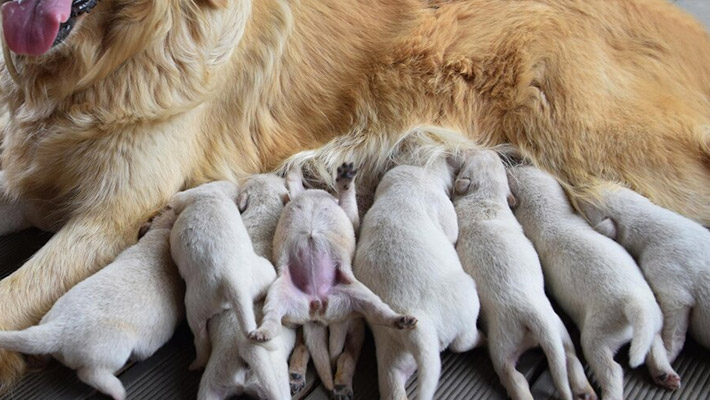
You should also try to understand the reproductive behavior of female dogs during the heat cycle, which is crucial for managing their interactions with male dogs. Female dogs in heat release pheromones that attract male dogs from a distance. They may display receptive behavior, such as holding their tails to the side, allowing mounting, and even actively seeking out male dogs.
Moreover, male dogs can detect a female in heat from a considerable distance and may become aggressive or exhibit undesirable behavior in their attempts to mate. This is why it is important to keep female dogs in a secure environment during their heat cycle to prevent unwanted mating.
In addition, keeping your female dog on a leash during walks and ensuring she is supervised when in contact with other dogs can help prevent unwanted encounters.
Potential Health Concerns During The Heat Cycle
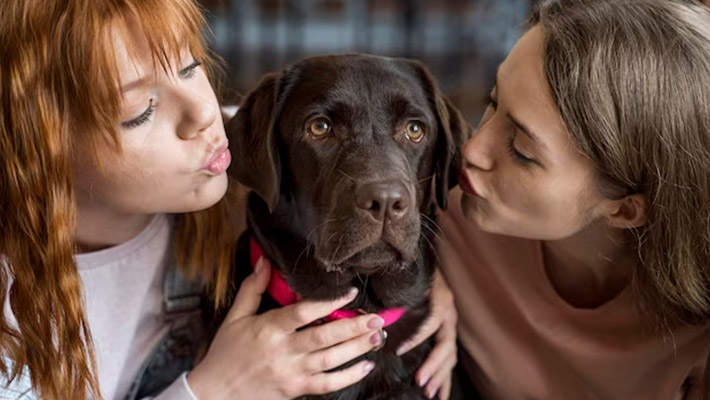
The dog heat cycle can sometimes come with potential health concerns. Female dogs are more prone to urinary tract infections during this time, as the hormonal changes can affect the pH balance in their urine. Infection in the urinary tract can also lead to other health complications such as vaginitis in dogs.
If you notice any signs of discomfort or frequent urination, consult your veterinarian for appropriate treatment. These health concerns have been explained in detail below:
Breast Cancer
Female dogs that are not spayed have a higher risk of developing mammary tumors, especially if they have had multiple heat cycles. The risk can be reduced by spaying before the first or second heat cycle. Breast cancer can be detected by palpating the mammary glands for any lumps or abnormalities. Treatment may involve surgery, chemotherapy, or radiation.
Pyometra
This is a serious infection of the uterus and is another potential health risk during the heat cycle. It is caused by bacteria entering the uterus through the open cervix. Signs of pyometra include lethargy, loss of appetite, increased thirst, and vaginal discharge. This condition can be life-threatening and requires immediate veterinary attention to remove the infected uterus.
Should You Spay Your Female Dog?

Spaying, or ovariohysterectomy, is a surgical procedure that involves removing the ovaries and uterus of a female dog. Neutering, or castration, is the removal of the testicles in a male dog. Veterinarians commonly recommend these procedures to prevent unwanted pregnancies, reduce the risk of certain cancers, eliminate the heat cycle, and manage behavioral issues.
If you do not intend to breed your dog, then consider spaying her, as it will eliminate the hassle and mess of dealing with a dog in heat. There are also several long-term health benefits of spaying. However, It is best to consult with your veterinarian to determine the most appropriate time for these procedures based on your dog’s age, overall health, and breed. Your vet is also the best person to ask how much it costs to neuter a dog.
Wrapping Up
It is essential for every pet owner to know about the dog heat cycle. This is because by recognizing the different stages, signs, and behaviors associated with the dog heat cycle, you can provide better care for your female dog.
Proper care during this time, including keeping your female dog away from intact male dogs and maintaining hygiene, is crucial for her health and overall well-being. If possible, try confining her in one corner of the house for her own safety and security. Keep her favorite blanket, toys, and a bowl of water within her reach to make her feel comfortable and foster an additional sense of security.
You should also consider consulting with your veterinarian to discuss spaying or neutering options to prevent unwanted pregnancies and potential health concerns. By being knowledgeable and proactive, you can ensure a safe and healthy reproductive journey for your beloved furry friend.








Leave A Comment